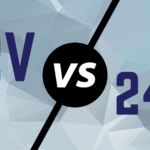
MENUMENU
TALK TO AN EXPERT
Special Hours: 7AM – 6PM PST
TALK TO AN EXPERT
Special Hours: 7AM – 6PM PST
Are you setting up your RV with batteries for off-grid power? If so, congratulations! Off-grid power is a fantastic way to increase your freedom on the road and allow you to stay off the grid comfortably. One critical piece of your system will need to be the correct inverter. Because of this, you’ll need to know what size inverter you need for your RV.
Below, we discuss what an inverter is, how to estimate your power needs, and how to choose the right one for you. Let’s begin.
An RV inverter is a device that converts 12V DC (direct current) power from your RV’s batteries into 120V AC (alternating current) power—the same type of electricity you get from household outlets or shore power. This allows you to run everyday appliances and electronics, like your microwave, coffee maker, or laptop, even when you’re not plugged into the grid.
When your RV is connected to shore power, your outlets and larger appliances run directly on AC power, so you don’t need the inverter. But when you’re off-grid or boondocking, your batteries supply only DC power—which isn’t compatible with most household devices. The inverter bridges this gap, giving you the flexibility to use all the comforts of home wherever you travel.
Your 12V DC RV batteries can run most of the lights and non-electric appliances in the RV when you unplug. But, they do not run higher power AC appliances without converting the DC power to AC power.
That’s why an RV power inverter is a necessary part of any camper’s electrical system.
Want to know more? Learn about converting AC power to DC power, and vice versa.
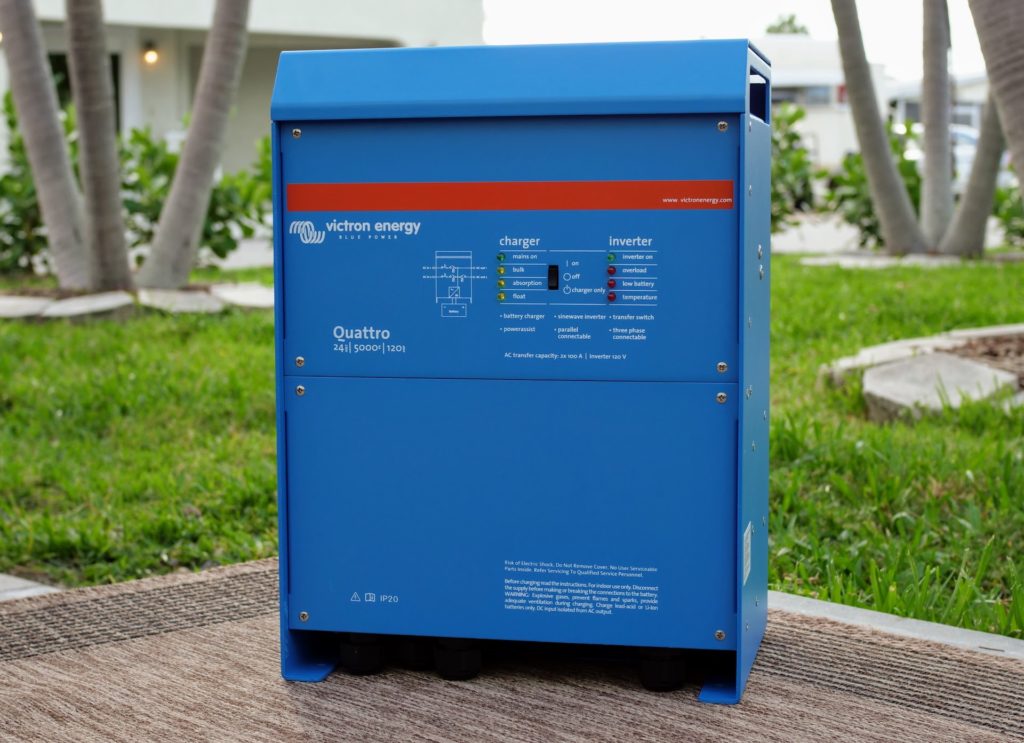
Inverters come in a wide range of sizes with varying abilities. Choosing the right size inverter for your RV will depend on several factors.
Let’s explore the questions you should ask before making your purchase.
First and foremost, you’ll need to determine which devices and appliances you want to power at the same time. This will help you decide which size inverter you’ll actually need. Begin by making a list of the electronics in your RV and adding up the watts they require.
Keep in mind that many household appliances, like microwaves, air conditioners, and even some power tools, require a higher amount of power for a few seconds when they first start up—this is called a surge or starting wattage.
Your inverter must be able to handle both the steady running power (continuous wattage) and short bursts of higher demand (surge wattage). A quality inverter is designed to handle these power surges for a few seconds.
Once you’ve added up the number of watts you’ll need to power (including the surges), add 20%. This will tell you the minimum size inverter you’ll need to power your devices. When looking at inverters, consider that they frequently have surge capacities that they can endure for short times.
Keep in mind that you do not need to be able to run everything off your inverter. However, it’s a good idea to understand your largest loads and how often you will be running them.
If you only have a 2000-watt inverter, you may need to turn things off before running a microwave. If you don’t want to worry about this, look at your large loads and oversize the inverter so that you have capacity.
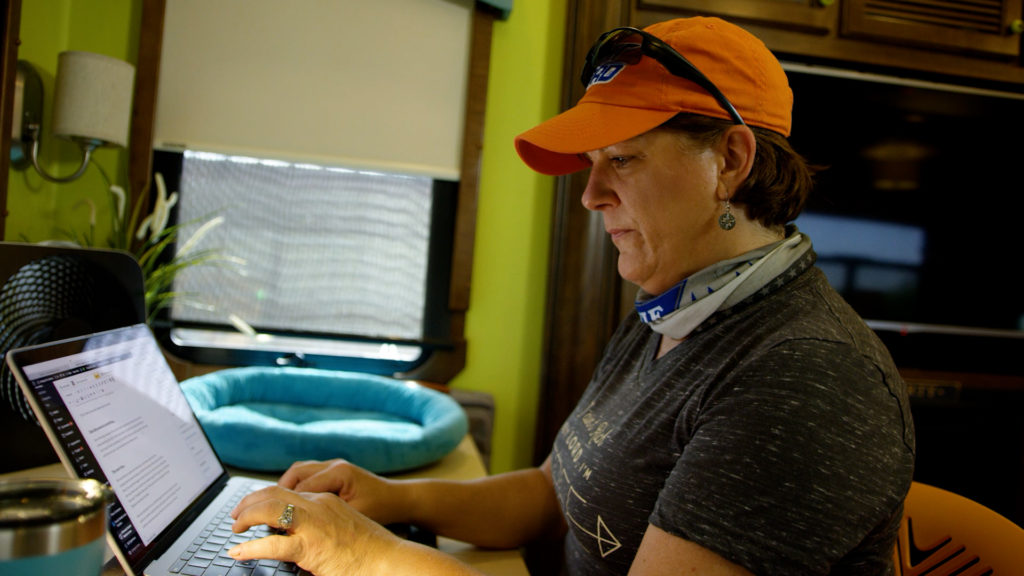
Matching your inverter to your battery capacity and type is very important. An inverter that is too big for the battery bank will drain it quickly, and the batteries may not be able to power it appropriately.
⚡️ While there is no set requirement for size, the following is a general rule of thumb recommendation when operating with our Battle Born Lithium batteries. We recommend having a minimum of 100Ah battery for each 1000 watts of inverter capacity. For example, a 3000-watt inverter would need at least three 100Ah Battle Born Batteries.
Just as important as the capacity is the battery type.
Lead-acid batteries have a high Peukert exponent that causes them to lose significant capacity when large loads are applied. Because of this, utilizing a larger inverter with a lead-acid battery bank requires an oversized system to limit this effect. For example, it’s recommended to have at least 800Ah of battery capacity in lead-acid to operate a 3000-watt inverter, whereas with our lithium, 300Ah will work.
The voltage of your RV battery system is another major factor in determining what inverter size you need. Higher voltages allow for larger inverters, greater efficiency, and simpler installation.
Typical Maximum Recommended Inverter Sizes by System Voltage:
Larger inverters require higher voltage battery banks to supply the needed power safely and efficiently.
If you’re using 12V batteries—the most common in RVs—you can wire them in series (not just parallel) to achieve 24V or 48V for bigger inverter systems. The main reasons to consider higher voltage are:
Pro tip: For most RVers, a 12V system is more than enough. But if you need to power heavy loads or want to future-proof your system, talk to our team about higher voltage battery and inverter options.
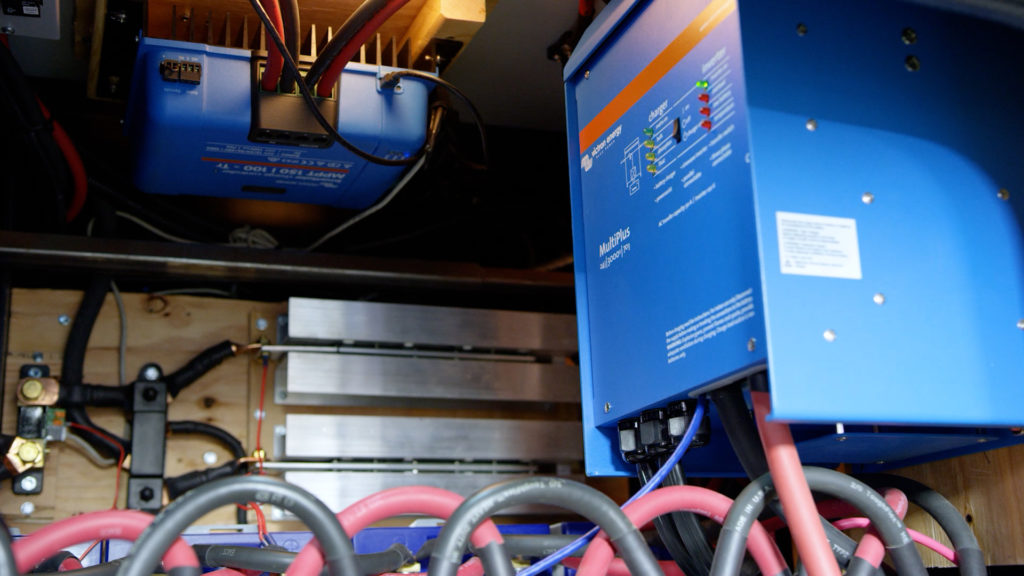
When choosing the right size inverter for your RV, it’s important to know exactly what you want to power. Every appliance and device in your rig draws a different amount of electricity, and your inverter must be able to handle the combined load—especially during peak usage.
Below is a quick-reference chart of common RV appliances and their typical power requirements:
| Common RV Appliances | Typical Wattage Draw |
|---|---|
| Microwave (small) | 800 – 1,000 watts |
| Coffee Maker | 600 – 900 watts |
| Refrigerator (AC mode) | 400 – 800 watts |
| Hair Dryer | 1,000 – 1,500 watts |
| Air Conditioner (13.5k BTU) | 1,500 – 2,000 watts (start-up); 1,200 – 1,500 watts (running) |
| TV (LED) | 30 – 100 watts |
| Laptop | 50 – 100 watts |
| CPAP Machine | 30 – 60 watts |
| Toaster | 800 – 1,500 watts |
| Blender | 300 – 700 watts |
| Vacuum Cleaner | 500 – 1,200 watts |
| Phone Charger | 5 – 20 watts |
⚡️ Why Lithium Batteries Matter
It’s important to remember that high-draw appliances—like microwaves, hair dryers, or air conditioners—can place a heavy demand on your battery bank. Battle Born Batteries’ lithium iron phosphate (LiFePO₄) batteries are designed to deliver high current without voltage sag, so you get reliable performance for even the most power-hungry devices.
Pro Tip: Pairing the right inverter size with a robust lithium battery bank ensures you can run more of your favorite comforts off-grid, with less worry about battery capacity or voltage drop.
Add up the wattage of all devices you plan to run simultaneously. Your camper’s inverter should have a continuous power rating equal to or greater than this total.
Most inverters will range between 1,000 watts and 5,000 watts, and you’ll probably need an inverter size somewhere in the middle. Many wonder what size inverter they need for their RV and estimate something far larger than necessary.
You can easily estimate the size inverter you’ll need by adding up the largest number of watts you’ll be using at a given time and adding 20%. For example, let’s say you need 1,500 watts to run your computer and microwave at the same time. Take 1,500 + 300 (which is 20% of 1,500) = 1,800 watts. This means you’ll need a pretty average size inverter of at least 2,000 watts.
⚡️A 2000- or 3000-watt unit is the most common size used in RVs.
Thankfully, no! If this were the case, we would all have to purchase very powerful inverters.
If you’re frequently camping off-grid and boondocking you may want your entire RV on the inverter to power every outlet in the camper. However, for shorter periods of time or only to have a couple of outlets powered, you can wire in an inverter to just handle those draws.
You always have the choice to hook your inverter to a subpanel in your RV. This means you may only have two or three receptacles that can power devices, and for many of us, that’s all we need! In this case, you’ll just need to ensure your inverter can power the devices that will be plugged into that subpanel.
Inverters use power just to be on, and the larger the inverter the more power it will draw at idle. Inverters also operate most efficiently with larger loads on them, thus, large inverters will be less efficient and waste more power if used only for light loads. Because of this, it is not recommended to oversize an inverter unless the power needs require it.
Do you have an epic solar and battery setup and want to power your entire RV? Luckily, some inverters can do that. In this case, we recommend a hybrid inverter charger. They not only invert DC power to AC power from your solar panels, but they can also convert DC power to AC power to charge your batteries.
Hybrid inverters, like the Victron Multiplus series, can also mix power from a shore or generator supply and your batteries. This can allow you to operate on a smaller generator or shore power supply without overloading the generator or breaker.
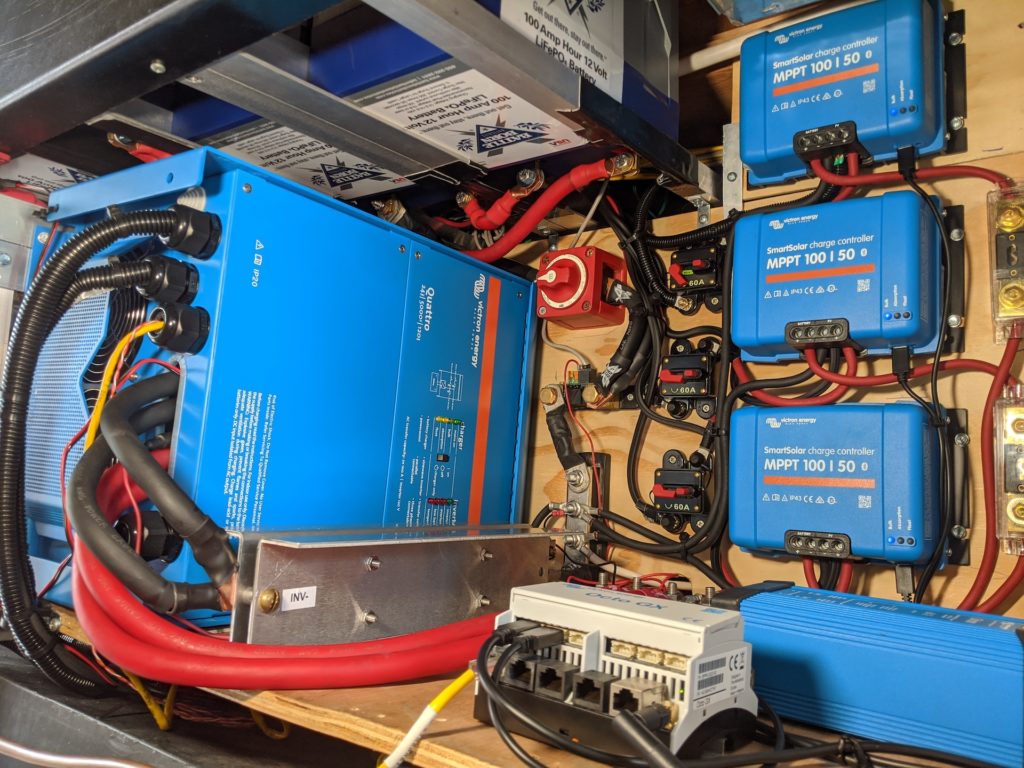
Yes! While systems can get complicated, inverters like the Victron MultiPlus can parallel together to increase capacity. Some inverters can even parallel together to offer higher voltage outputs like 240V.
Sometimes, RVs will install multiple inverters to power dedicated items. For example, if an RV has a residential fridge, running one large inverter would not be as efficient as running a smaller one just for the fridge. In this case, the larger primary inverter could be shut off to save power while the smaller unit stays on to run the fridge.
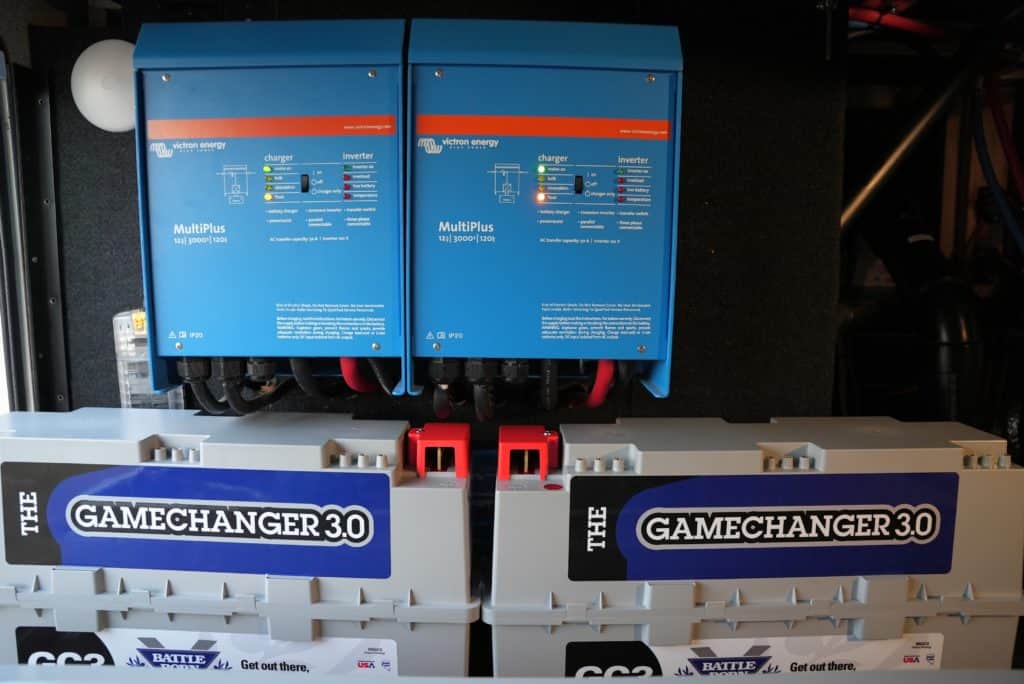
Whether you need an inverter depends on how you travel. If you always camp at RV parks with full hookups, you’ll rarely need an inverter because your rig will be connected to shore power (AC).
But if you want the freedom to camp off-grid or boondock in remote locations, an inverter is essential. It converts the 12V DC power from your batteries (or solar power system) into 120V AC power—allowing you to run most household appliances and charge your devices anywhere.
The right inverter size depends on what you want to power, the size of your battery bank, and your camping style. Some RVers get by with a compact inverter for small electronics; others need a larger inverter for microwaves, air conditioners, or full off-grid setups.
Yes, you can run your RV air conditioner on an inverter, but only if both your inverter and battery bank are sized for the job. Most RV air conditioners need a 2,000 to 3,000+ watt inverter to handle both the running and surge power, especially for older models.
However, many newer RV air conditioning units with soft-start or inverter technology have little to no startup surge, making them easier to run on battery power. For best results, pair your inverter with a robust lithium battery bank, like Battle Born.
Learn more: How to run your RV A/C on lithium batteries
Costs can range from a few hundred dollars (DIY, smaller systems) to $2,000+ for professional installation of larger, lithium-ready systems. Factors include inverter size, wiring, installation complexity, and battery upgrades. Our team is standing by at 855.292.2831 to help you find the sweet spot between your sizing needs and your budget!
Not always. Some CPAP machines can run directly on 12V DC power from your RV batteries, often with a special adapter. However, if your CPAP uses a standard household plug or you want to use your regular power supply, you’ll need an inverter (300 watts or higher is usually enough) to convert to alternating current. For the best performance and longer run-times, we suggest pairing your system with a lithium battery bank.
For more details—including solar power options and setup tips—see our guide: Using a CPAP Machine Off-Grid on Solar Power
Most RV refrigerators operate on propane or DC power and do not need AC power. However, if your RV has a residential fridge, you’ll need a 1,000-watt inverter or larger. Check your fridge’s specs and make sure your battery bank can keep up, especially for extended off-grid use.
Yes, but you’ll need a 2,000-watt (or larger) inverter. Hair dryers pull a lot of power—lithium batteries are best for this kind of load.
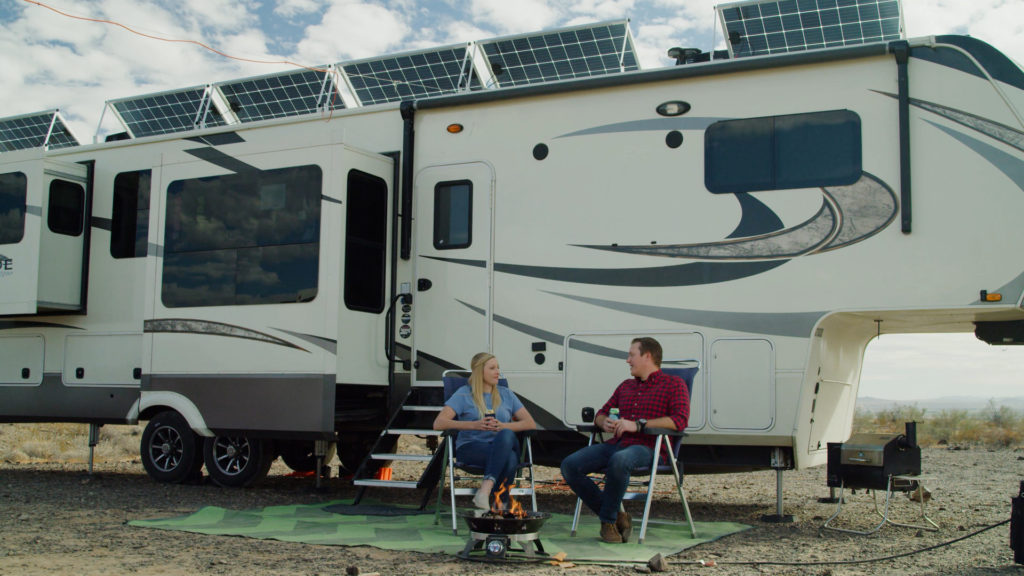
We know that building or upgrading an electrical system can be overwhelming, so we’re here to help. Our Reno, Nevada-based sales and customer service team is standing by at (855) 292-2831 to take your questions!
Also, join us on Facebook, Instagram, and YouTube to learn more about how lithium battery systems can power your lifestyle, see how others have built their systems, and gain the confidence to get out there and stay out there.
Shop Best Sellers

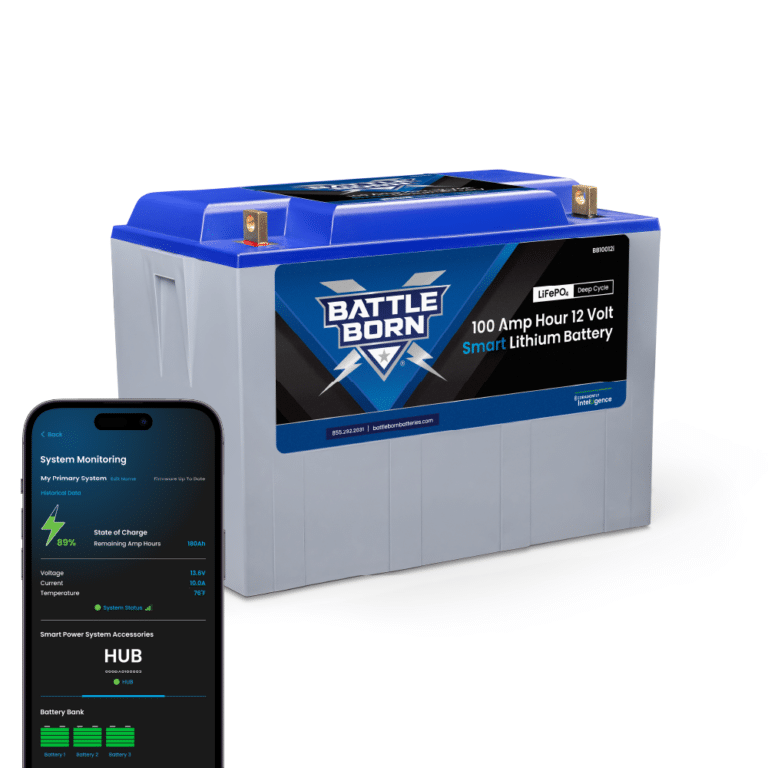

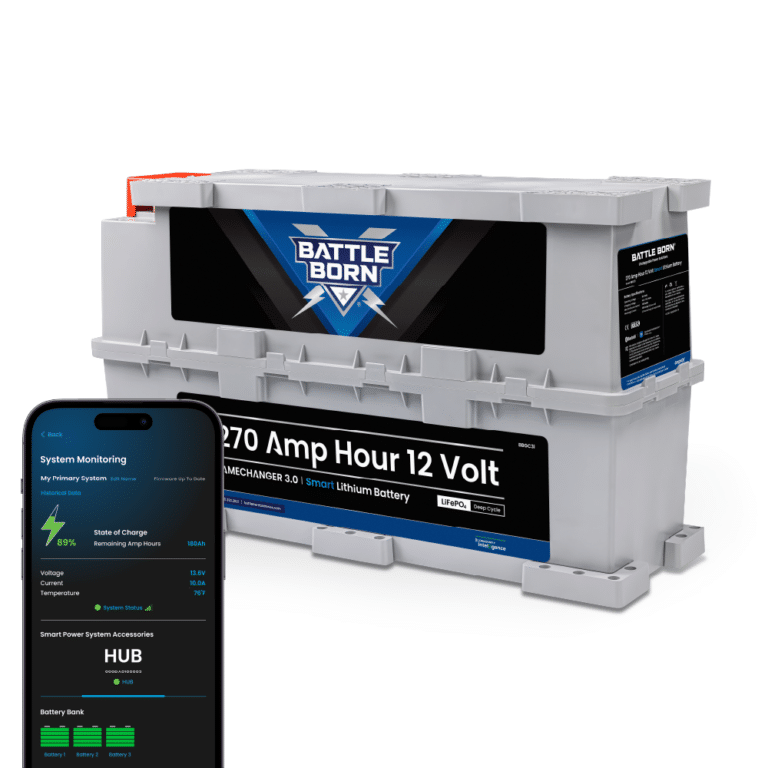




Ask a technical specialist now at 855.292.2831
Stay in the Know
4 thoughts on “What Size Inverter Do I Need for My RV?”
I replaced a failing converter that was making squeaking noises and dimming the lights with an MBA power converter. This one works great. Pretty straightforward install with no issues. I like this product’s open design, which, together with the cooling fan, ensures more effective heat dissipation. Surprisingly, the cooling fan is almost noiseless. One will never feel annoyed by the loud buzzing sound of some RV converters.
I have a 2013 Airstream Flying Cloud and am about to purchase a solar system with 500 watts to be installed. I plan to purchase 2 Battle Born lithium batteries. I use a toaster oven, phone and laptop charger, hairdryer, rv domestic refrigerator and space heater. What size inverter do I need?
Hi Jane! For what you’re looking to power, we would recommend a 3000w inverter, but for that, we would need to adjust your battery and solar capacity that you’re looking to get. Our technical sales team would happily assist you in configuring a system suited to your needs. You can reach them at (855) 292-2831 (M-F 8:00am-4:30pm (PST))
I have a bus that already has 4 solars, I really want a setup where I’ll be 100% off grid.
I’d like to know what I would need to set the system up from scratch, with enough power to run the bus totally off grid, and prices if possible?